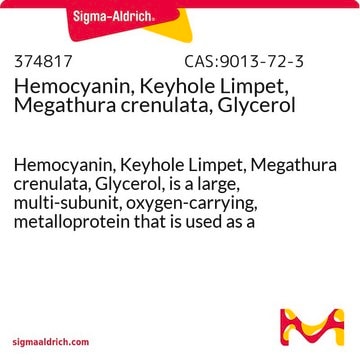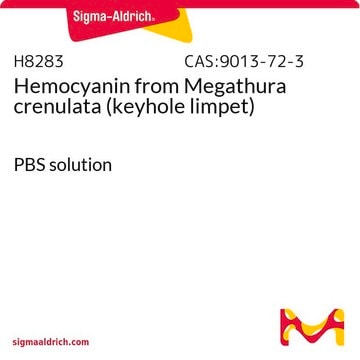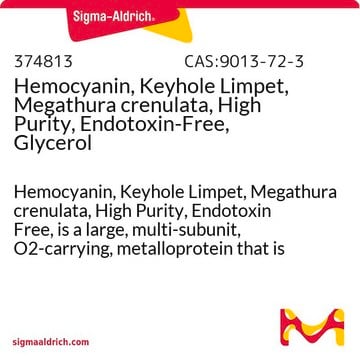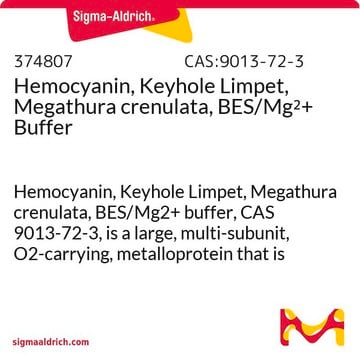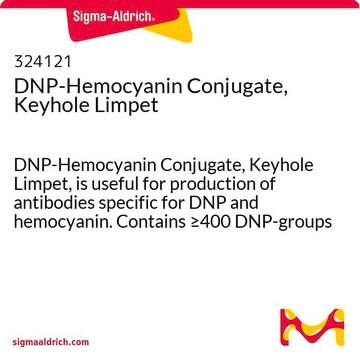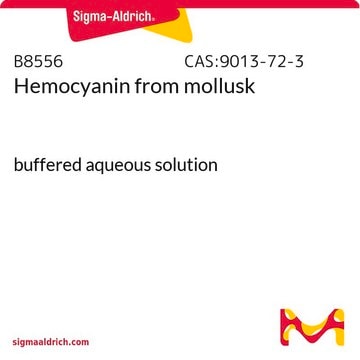374825
Hemocyanin, Keyhole Limpet, Megathura crenulata, High Purity, Endotoxin-Free, Sterile-Liquid
Hemocyanin, Keyhole Limpet, Megathura crenulata, High Purity, Endotoxin Free, is a large, multi-subunit, O2-carrying, metalloprotein that is used as a carrier protein in the production of antibodies.
Synonym(s):
Hemocyanin, Keyhole Limpet, Megathura crenulata, High Purity, Endotoxin-Free, Sterile-Liquid
About This Item
Recommended Products
Quality Level
Assay
≥95% (size exclusion chromatography)
form
liquid
manufacturer/tradename
Calbiochem®
storage condition
do not freeze
impurities
≤25 EU/mg Endotoxin
≥1.5 x 10⁻³ copper to protein ratio
≥5 mg/mL Protein
color
clear bluish
shipped in
wet ice
storage temp.
2-8°C
General description
Application
Biochem/physiol Actions
Packaging
Warning
Physical form
Preparation Note
Legal Information
Storage Class Code
10 - Combustible liquids
WGK
WGK 2
Flash Point(F)
Not applicable
Flash Point(C)
Not applicable
Certificates of Analysis (COA)
Search for Certificates of Analysis (COA) by entering the products Lot/Batch Number. Lot and Batch Numbers can be found on a product’s label following the words ‘Lot’ or ‘Batch’.
Already Own This Product?
Find documentation for the products that you have recently purchased in the Document Library.
Our team of scientists has experience in all areas of research including Life Science, Material Science, Chemical Synthesis, Chromatography, Analytical and many others.
Contact Technical Service
